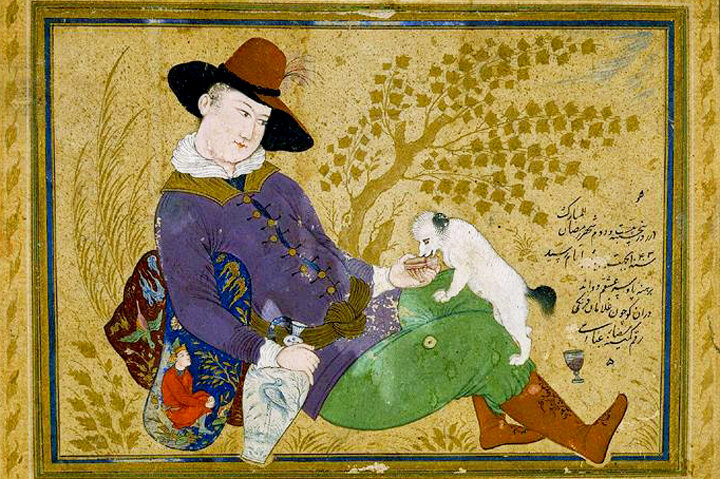Persian miniature offers glimpses of esthetic heights

TEHRAN – An art of exceptionally complex style, painstaking detail, and intricate narrative, Persian miniatures do not prompt an immediate response from anyone whose eyes are accustomed to rapid visual comprehension.
The two-dimensional artwork involves the design and creation of small paintings on books, papier-mâché, rugs, textiles, walls, ceramics and other items using raw materials such as gold, silver and various organic substances.
Experts believe that miniature is an art that brings the ability to depict the whole of nature in a small frame and essentially refers to any delicate artistic phenomenon, regardless of the way it has been created.
As mentioned by Visit Iran, the word miniature literally means a small and delicate nature, though the word itself has entered the Persian language in the middle of the recent century, and almost since the Qajar period (1789–1925), it is an art which has for long existed and is of ancient history in Iran.
Persian miniature has roots in the distant past before the advent of Islam. Indeed, Persian miniature, which has once been inspired by Chinese painting methods and assimilated with a unique perspective of Iranian art, has made a path for the emergence of divine effects in Iranian painting before the advent of Islam; and, afterward, has finally merged with theosophy and Islamic thoughts.
Decorated tiles, some of which still exist, suggest that years before the Mongol invasion of Iran between 1219 and 1221, the same painting and drawing styles and methods, which were then adopted as styles of book paintings, were used in Iran.
Another popular belief, according to Visit Iran, suggests miniature originated in Iran and afterward has spread to China; and, in the Mongol period, it has returned to Iran in a rather developed form.
Early in the Islamic era, Iranian artists made an extraordinary effort to complete and develop this art, establishing special painting schools such as schools of Shiraz, Harat, Tabriz, Qazvin, and Isfahan, and combining it with Arabic script or handwriting.
Efforts to gild edges and frontispiece of the Holy Quran, arabesques, and Khitan patterns are all the precious works of the miniature which originated as a combination of miniature and Arabic handwriting, in the third century AH, i.e. when Iranians succeeded to enter the Abbasid court.
An extensive portion of these works was destroyed during the Mongol invasions in the seventh and eighth centuries AH. Moreover, during the Ilkhanid period when the country has returned to a relatively calm situation, other prominent works of art such as the Shahnameh of Ferdowsi emerged.
Later on, due to the constant intellect and freedom of action with which craftsmen were provided after the Bagdad school, Iranian miniature works in the Herat school developed to some extent, and finally the art of Persian painting and miniature, after the Herat period, was transferred to the Safavid era. In that period, after the selection of Tabriz as the capital, Kamal ud-Din Behzad was invited to Tabriz and was appointed as the head of the royal library and, in collaboration with great craftsmen, endeavored to develop and evolve it.
Tabriz school of miniature persisted as before until Qazvin became the new capital. Regarding this school, it can be noted that miniatures in this era were all of a similar type, and in terms of elegance, pen strokes, color, and design, they followed the Herat school and differs only slightly.
Isfahan school of the miniature was established when Isfahan became the capital city, and during this period, style and methods of work changed dramatically, examples of which can be seen in decorative motifs of 17th-century majestic buildings of Isfahan.
AFM
